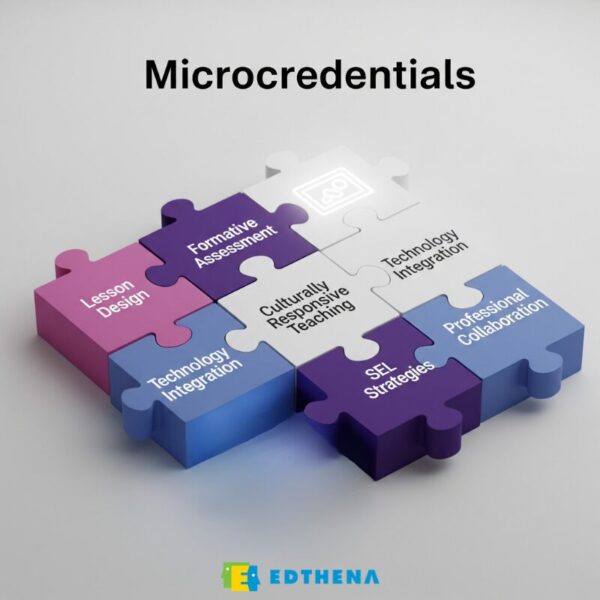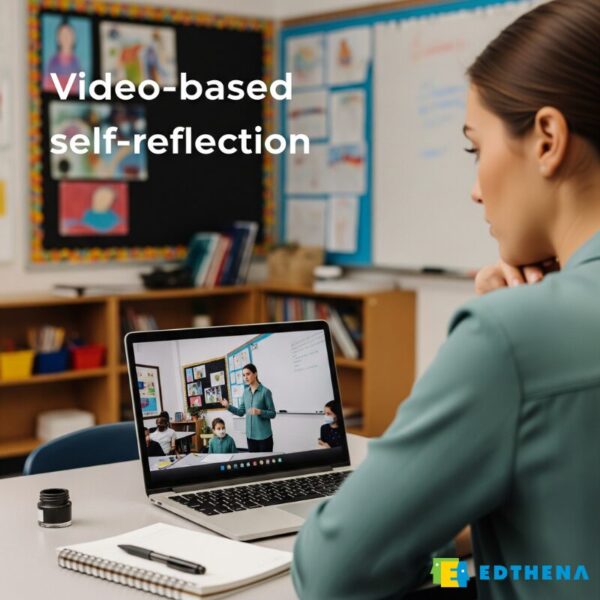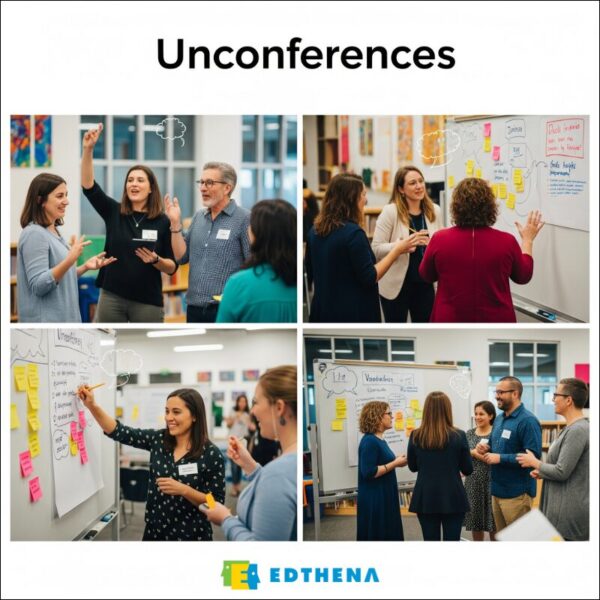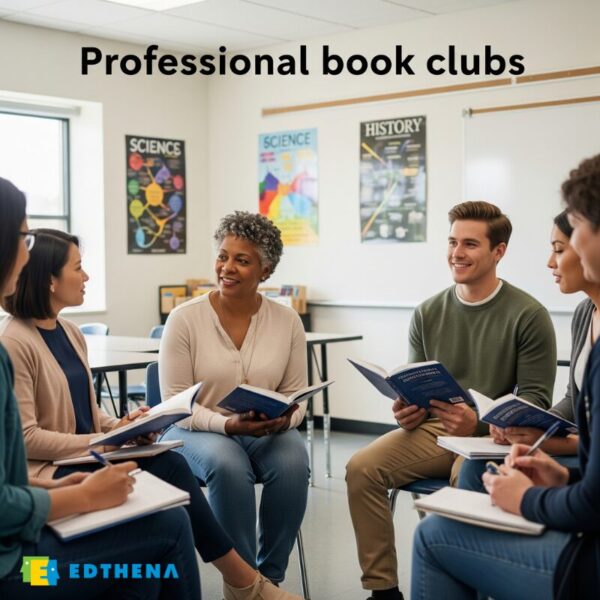Back-to-School PD for Teachers: Low-Cost Ideas for 2025

Planning professional development is never simple, but recent events have highlighted the need for more resilient approaches to educator growth.
In July 2025, the U.S. Department of Education temporarily froze several major funding streams, including Title II-A, which supports teacher professional development. Though released after several weeks, the freeze revealed a concerning reality: districts can no longer assume federal PD funding will remain stable. Future budget cuts or policy changes could disrupt these streams again, potentially for much longer.
This uncertainty demands a different planning approach. Rather than relying heavily on federal dollars, forward-thinking leaders need to develop strategies that deliver high-quality professional learning regardless of funding fluctuations.
One way to reduce federal dependence is by identifying high-quality, low-cost (or even free) alternatives. However, it’s important to resist choosing options simply because they’re labeled “free.”
No professional learning is truly without cost. There’s always a time investment, and for teachers, time is precious. Instead, focus on solutions that are low-cost, high-impact, and immediately applicable.
To help you build a more resilient professional development program, we’ve outlined four effective and budget-friendly models that can be implemented at any school level.
Low-cost teacher PD models for 2025
For many districts, Title II-A alone accounts for the majority, or entirety, of the annual professional learning budget. With funding certainty now in question, leaders are facing tough choices.
Whether your professional learning budget is tight or uncertain, you still have options. What matters most is designing learning that is purposeful, job-embedded, and relevant to teachers’ real needs.
Here are four PD formats that work, without big price tags:
Microcredentials

Microcredentials offer a flexible and recognized pathway for teacher growth, often taking the form of bite-sized, skill-focused learning experiences that teachers complete at their own pace, often by submitting classroom artifacts and reflecting on their practice.
What makes microcredentials powerful is their flexibility. Teachers choose what’s most relevant to them, and the learning is usually asynchronous. Organizations like Digital Promise offer hundreds of these options, many at little or no cost.
- First steps: Survey teachers about their biggest instructional challenges, then research relevant microcredentials from Digital Promise or your state education department website.
- Key outcome/deliverable: Teachers complete two micro-credentials per marking period.
- Common challenge: Teachers may feel overwhelmed by too many options.
- Solution: Create a curated list of 4-6 microcredentials aligned with your school’s key priorities.
Video-based self-reflection

Teachers don’t always need an external coach to improve. Guided self-reflection that includes watching a recorded lesson can spark dramatic changes in instruction.
Encourage teachers to record a short segment of instruction using a phone or laptop, then reflect on specific focus areas like core teaching practices or Science of Reading-based practices. What do they notice about their teaching?
This approach is more cost-effective than in-person professional development (an entire year of personalized coaching for your school is $3,450 for AI Coach), builds reflection habits, and keeps the work grounded in actual classroom practice.
- First steps: Ask teachers to record 10-15 minutes of instruction focused on one specific teaching practice.
- Key outcome/deliverable: Teachers complete one reflection cycle per marking period.
- Common challenge: Teachers might be hesitant to be recorded due to privacy concerns.
- Solution: State that videos are for personal reflection and that, in the AI Coach platform, they can only be viewed by the teacher.
Unconferences

An unconference is a participant-driven professional learning event where teachers collaboratively create the agenda and lead sessions based on their real classroom needs and expertise. Unlike traditional conferences with predetermined sessions, unconferences put educators in control of their learning experience.
At the start of the event, participants suggest topics they want to discuss or learn about. The agenda is built in real-time based on these suggestions, and any teacher can facilitate a session. The “law of two feet” encourages participants to move freely between sessions to find the most valuable learning for them.
This format is powerful because it’s entirely responsive to what teachers need, costs virtually nothing to organize, and builds genuine professional community through peer-to-peer learning.
Feel free to adapt this format to your own needs. The unconference doesn’t have to be planned on the fly. Administrators can allow time for teachers to prep and supply examples. Just don’t overthink it. Topics that are high-value but simple, such as “How to check for student understanding,” can have a meaningful impact without overwhelming facilitators or learners.
- First steps: Survey teachers about their biggest challenges, then organize a half-day event where participants create the agenda together and lead their sessions.
- Key outcome/deliverable: Provide at least two options per agenda period during your unconference.
- Common challenge: Teachers may worry about facilitating without being experts.
- Solution: Emphasize that sharing classroom experiences and asking questions together is more valuable than having all the answers.
Professional book clubs

Book clubs for teachers can offer deep learning at minimal cost while building a professional community. Teachers read and discuss research-based books on topics relevant to their practice, creating natural opportunities for reflection and collaboration.
Choose books that connect directly to classroom application. Most professional books cost $20-30, and copies can be shared or purchased gradually.
- First steps: Select one book aligned with a school priority, recruit 5-8 interested teachers, and establish a meeting schedule (monthly works well for most groups).
- Key outcome/deliverable: Teachers complete one book club cycle per semester.
- Common challenge: Teachers struggle to find time to read.
- Solution: Structure meetings so participants can benefit even if they haven’t finished all chapters, and consider audiobook options for busy schedules.
Getting started with low-cost teacher PD: Your next steps
Ready to move forward? Here’s how to begin:
- Assess your current reality. What’s your available PD budget? How many hours of professional learning do you need to provide? What are your school’s biggest instructional priorities?
- Engage teacher voices. Survey your staff about their learning preferences and needs. The most effective PD happens when teachers feel ownership in the process.
- Plan for sustainability. Rather than one-time workshops, choose approaches that can continue throughout the year with minimal additional resources.
- Start small and focused. Choose one of the four approaches above that best matches your context and resources. It’s better to do one thing well than to spread efforts too thin.
- Track and adjust. Build in regular check-ins to see what’s working and what needs modification.
The freeze on federal funding may have been unexpected, but similar future events don’t have to derail your school or district’s professional learning goals. High-quality professional learning doesn’t have to come with a big price tag or a federal grant behind it.
As a school leader, you can’t control the federal budget, but you can control how your teachers learn, grow, and feel supported heading into the year.
Start small. Focus on what matters most. And remember: creative leadership often shines brightest in moments of constraint.
Ready to maximize your PD budget? AI Coach can help you provide teachers with 600+ contact hours for just $3,450. Schedule a demo to learn more.
